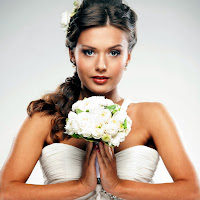A sword is a hand weapon having a long blade set in a hilt that can be used to cut or thrust. It is also a symbol of military rank and authority. Swords can be worn in many ways to indicate the rank of an officer: for parades, reviews, courts-martial, tattoos, change of command, and weddings. They are not normally worn in church, as they could easily get stuck in the altar or rub against religious icons. Swords are made of a variety of metals. The most common are iron, steel and aluminium alloys. Often they are decorated with decorations and carvings, or covered in silver or gold leaf to increase their value and beauty.
Swords can be curved, straight or pointed at the end. Pointed swords were developed to penetrate armour. Early iron swords had rounded points because of the limitations of metallurgy, but as armour increased the points were made narrower and stiffer so that they could defeat it by thrusting. Narrower blades may have a fuller, or grooved central ridge, to lighten them and increase their strength and stiffness. This can have an aesthetic effect, although the ridges can break or wear away more quickly than the rest of the blade, making the Sword less durable.
To make a sword, iron sand is heated to a temperature of 1200-1500 degrees Celsius in a furnace called a tatara. The sand is mixed with carbon, which combines with the iron to form steel. Swordsmiths then shape the sword by hammering it. The handle, or hilt, is attached to the blade by a metal rod called a tang. The tang can be full or partial.
If the swordsman doesn't keep his hands on his hilt and sheath, he can accidentally let go of the sword and lose it. Then he will need to catch the sword again with his other hand, usually by reaching around his body. Keeping one's hands on the sheath and hilt also keeps the sword from sliding out when the holder leans forward.
A good swordsman must be able to anticipate his opponent's movements and predict how far his opponent will reach with his swing. It takes practice to learn to read an opponent and know how much power or force is needed for a hit. A good swordsman can also use his skill to deflect or dodge an opponent's attack by putting pressure on the pommel or using quick and precise reflexes to recover from a misstep.
Sword fights are intense and dramatic. It is important that the writer show the stakes of the sword fight in the events leading up to it and the characters' motivations behind their actions during the fight. The characters should be fully fleshed out and three dimensional so the readers can feel their thirst for violence or desperation to survive.
Sword fights are dangerous, violent and exciting, but the writer must remember that it takes two to tango in a sword fight. There are also consequences to failure.


0 comments:
Post a Comment